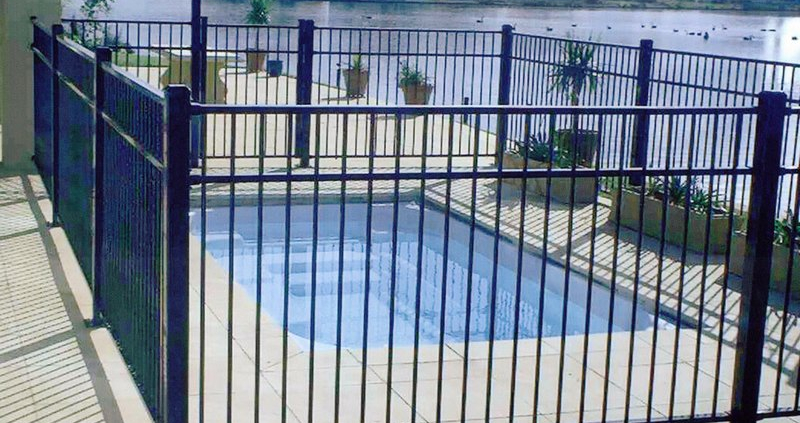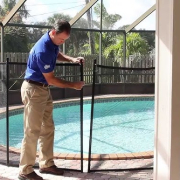DIY Pool/Spa Barrier Checks: Ensuring Safety Between 2-Year Compliance Inspector Visits in Queensland
In Queensland, pool safety is a priority, with regulations in place to ensure that all residential pools and spas are properly secured to prevent accidents, especially among young children. Pool safety barriers are a crucial part of these regulations, but compliance inspections typically only occur once every two years. In the time between these inspections, it’s important for pool owners to take proactive steps to ensure their pool barriers remain safe and compliant.
This article will guide Queensland pool owners through DIY pool/spa barrier checks to help maintain safety and avoid potential hazards before your next compliance inspection.
Why DIY Pool/Spa Barrier Checks Matter
While a professional compliance inspector is essential for ensuring your pool fence meets legal standards, regular DIY checks can help you identify issues that could compromise safety. Children under the age of five are particularly vulnerable to drowning accidents, and a properly maintained pool barrier is your first line of defense. By performing simple checks regularly, you can address small problems before they become serious safety risks.
- Check the Height of Your Pool/Spa Barrier
In Queensland, one of the key requirements for a compliant pool barrier is its height. The pool fence must be at least 1.2 metres tall (1200mm), and the height should be measured from the ground to the top of the fence. Fences shorter than this are considered unsafe, as they may be easily climbed by children.
DIY Check:
- Use a tape measure to check the height of your pool fence at multiple points, ensuring it meets the 1.2-metre minimum requirement.
- Pay special attention to areas where the ground might have shifted or settled. This could cause the height to drop in certain sections, which might create a hazard.
- If the fence has a sag or is leaning, this could affect its height. Straighten or repair it to maintain proper height standards.
- Inspect for Gaps and Openings
Another important aspect of pool safety barriers is the prevention of gaps that children could slip through. In Queensland, there are strict rules about the size of gaps between the fence and the ground or between vertical bars. The gap at the bottom of the fence must not exceed 100mm. If the fence is made of mesh or has horizontal rails, make sure the openings aren’t large enough for a child to crawl or squeeze through.
DIY Check:
- Measure the gap at the bottom of the fence using a ruler or measuring tape. Ensure it does not exceed 100mm, especially in areas where soil may have eroded or settled.
- If the fence has vertical bars, check that the gap between them is no wider than 100mm. This is the standard for vertical bar fences.
- If there are horizontal rails or ledges near the fence, these can be used by children to climb over. Make sure there are no structures nearby that can help children scale the fence.
- Ensure the Gate is Self-Closing and Self-Latching
The gate is one of the most critical areas of your pool barrier. In Queensland, pool gates must self-close and self-latch securely from any open position. The latch must be positioned at least 1.5 metres above ground level to prevent small children from reaching it.
DIY Check:
- Open the gate and let it swing shut. Observe whether it automatically closes on its own. If the gate does not close by itself, you may need to adjust the hinges or check for wear and tear.
- Check the latch mechanism. It should securely latch every time the gate closes, and the latch should be difficult for young children to manipulate. Test the latch to ensure it stays in place when engaged.
- Make sure the latch is located at least 1.5 metres above ground level. If it’s too low, a child may be able to reach and open it, defeating the purpose of the barrier.
- Look for any obstructions that could prevent the gate from closing, such as dirt or debris around the bottom of the gate.
- Look for Climbable Features
A key part of pool barrier regulations is ensuring that the fence is climb-resistant. Climbing is a natural instinct for young children, and a fence with horizontal rails or other climbable features can make it easy for them to gain access to the pool area.
DIY Check:
- Inspect your pool fence for horizontal bars or ledges that children could use to climb over. These are prohibited under the regulations.
- Ensure that nearby landscaping, such as trees, bushes, or furniture, isn’t providing a boost for children to scale the fence. If you find any objects close to the fence, consider moving them to a safer distance.
- If your pool fence has vertical bars, check that they are spaced appropriately and do not provide footholds for climbing.
- Inspect for Wear and Tear
Your pool fence and gate are exposed to the elements, so regular wear and tear are inevitable. Sun, wind, rain, and even saltwater from nearby beaches can deteriorate materials like timber, metal, and mesh over time, which could compromise the barrier’s effectiveness.
DIY Check:
- Metal Fences: Check for rust, corrosion, or loose fasteners. If you spot rust, clean the area thoroughly and treat it with a rust-resistant product. Ensure all screws and bolts are tightly fastened.
- Glass Fences: Inspect for any chips, cracks, or other damage. A damaged glass panel should be replaced immediately to avoid safety hazards.
- Timber Fences: Look for signs of rot, warping, or splinters. Wood fences should be regularly treated and maintained to prevent deterioration.
- Mesh Fences: Inspect the mesh for holes, tears, or loose stitching. Even small holes can compromise the safety of the barrier, so repair or replace the mesh as needed.
- Ensure the Pool Area is Clear of Climbing Aids
Children may attempt to climb over the pool barrier if they can find a way to get closer to it. Objects placed near the fence can act as climbing aids, giving children the boost they need to access the pool area.
DIY Check:
- Walk around the entire pool area and remove any items that could be used to climb over the fence, such as chairs, tables, toys, or garden equipment.
- Trim back any tree branches or shrubs that may be close to the fence and provide a foothold for climbing.
- Document and Maintain a Safety Log
It’s important to keep track of your DIY pool barrier checks. A written log of inspections can be helpful in demonstrating your commitment to safety, especially if you need to prove compliance in the event of an incident.
DIY Check:
- Create a simple checklist that includes each of the above items. Perform your checks regularly, at least once a month, and record your findings.
- Include the date of each inspection and note any repairs or maintenance actions taken. If any non-compliance issues arise, take immediate action to rectify them.
Conclusion
While pool barrier inspections by a licensed professional are essential for compliance, DIY pool barrier checks are equally important for maintaining safety between visits. Regular checks of your pool fence’s height, gaps, gates, and condition can significantly reduce the risk of accidents, ensuring that your pool remains a safe environment for your family and guests.
By taking responsibility for these regular inspections, you are not only staying compliant with Queensland pool safety laws but also helping to prevent potential dangers. Remember, a few minutes of attention to detail can go a long way in keeping your pool area secure and accident-free. Stay proactive, stay safe, and ensure your pool barrier is always in top condition!




